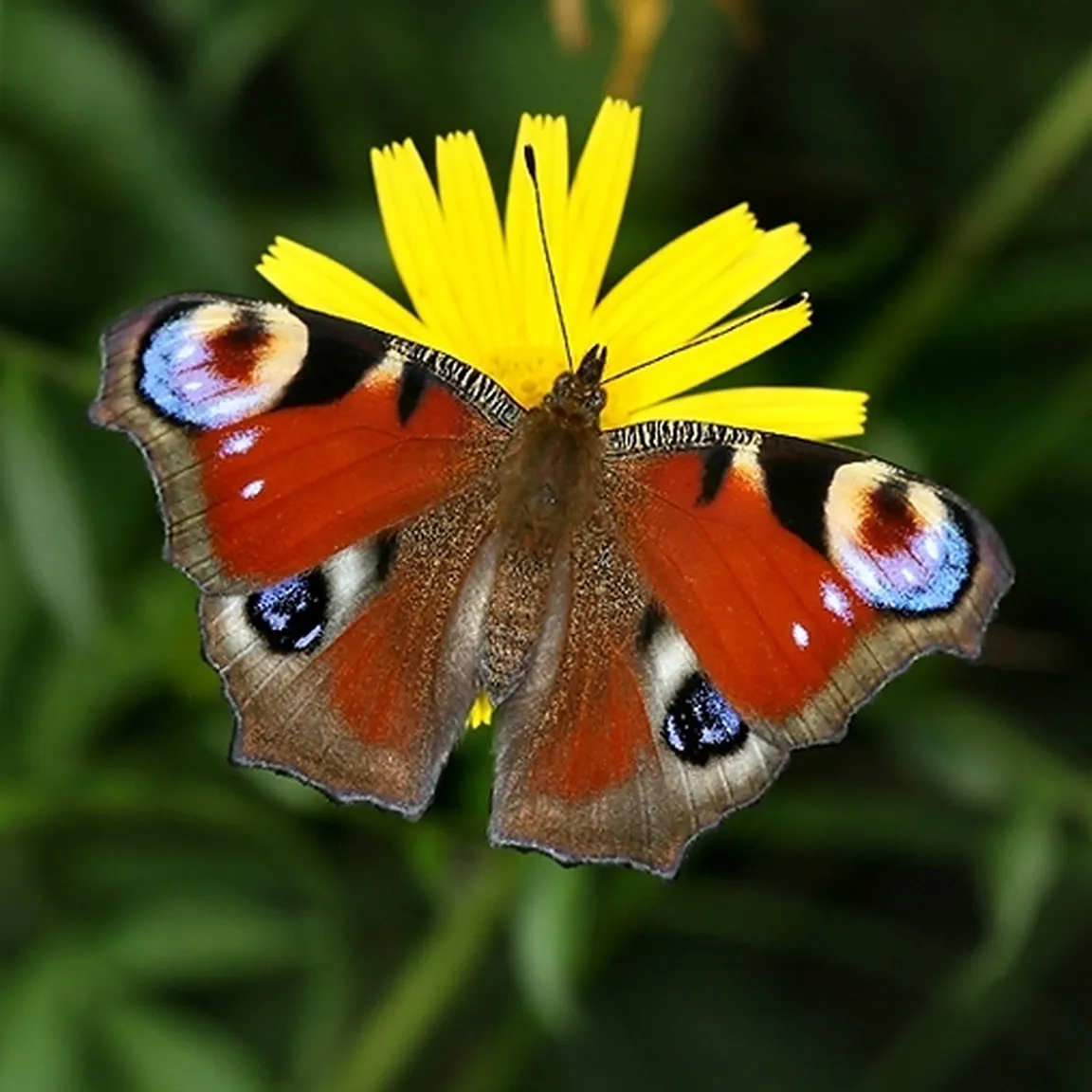Wingspan: 50–60 mm
Flight period: in one generation from June to October, with a resting period during the hottest and driest months; adults overwinter and appear the following year from March to May
Larval host plants: stinging nettle (Urtica dioica) and common hop (Humulus lupulus)
The Peacock butterfly (Inachis io) is one of the most noticeable European butterflies, as it has on the dark red upperside of its wings four large conspicuous eyespots — one on each wing. The predator tries to confuse it by rapidly closing and opening its wings and flashing these large 'eyes'. It overwinters and endures dark shelters during winter and hot summers, such as tree hollows, underground caves, attics, or cellars. The very dark underside of its wings with a noticeable pattern of black lines helps it blend into the surroundings, where in a resting state it survives harsh conditions.
It is one of the first butterflies that can be seen in spring, as adults overwinter and at the first longer warm spells seek willow catkins, where they sip nectar. The Peacock butterfly is common from the sea to high mountains. Along riverbanks forested with trees, in damp meadows and pastures, and in areas with persistent human influence, where stinging nettle often forms dense stands. Its larvae live and feed in groups, separating only just before pupation.


